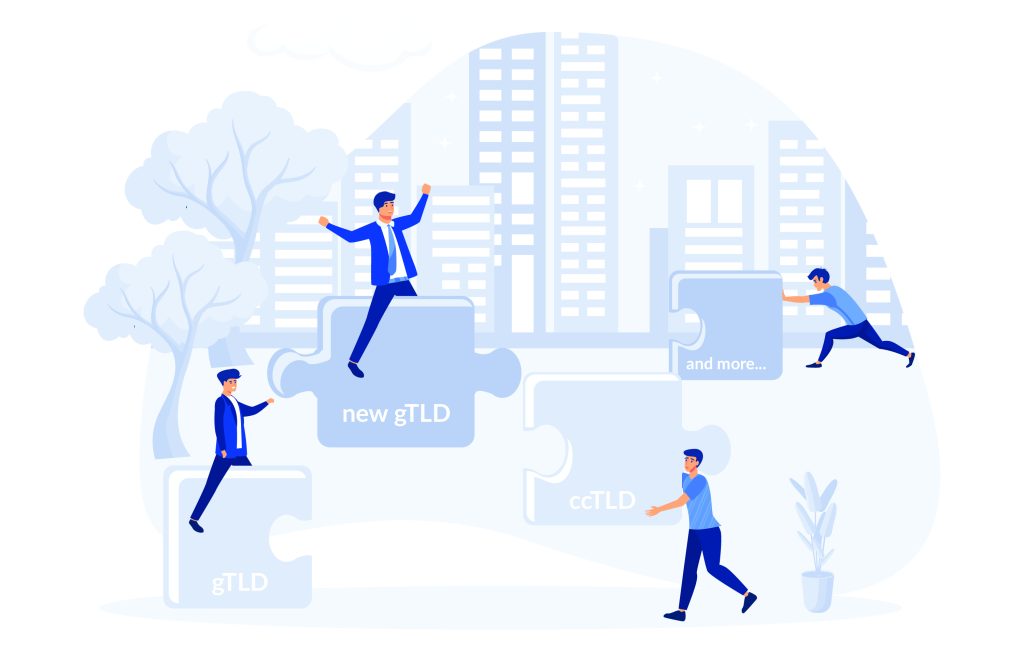When it comes to choosing a domain name, there are many different options to consider. One important decision is deciding between a generic top-level domain (gTLD), a new top-level domain (nTLD), and a country code top-level domain (ccTLD). Each type of domain has its own set of benefits and limitations, and understanding the differences between them can help you make an informed decision when choosing a domain name for your business or organization.
A gTLD is a top-level domain that is not specific to a certain country or region, such as .com, .net, and .org. These types of domain names are widely recognized and accepted, and are generally considered to be more reputable than other types of domain names. gTLDs are usually managed by the Internet Corporation for Assigned Names and Numbers (ICANN), a nonprofit organization responsible for overseeing the domain name system (DNS) on the internet.
nTLDs, on the other hand, are new TLDs that have been created more recently and are not as established as gTLDs. They come in a variety of forms, from generic keywords like .one, .link, .blog, to brand names like .google, .amazon, etc. These TLDs have come to represent more specific niches and industries and allow for more targeted marketing. nTLDs are usually managed by private companies, and not all of them are under ICANN’s authority.
A ccTLD is a top-level domain that is specific to a certain country or region, such as .no for Norway, .dk for Denmark, and .se for Sweden. These types of domain names are typically used by businesses and organizations that operate within a specific country or region. ccTLDs are generally considered to be more credible for customers and search engines within the specific country or region and offer an opportunity for better local SEO results. ccTLDs are usually managed by the country’s government or a designated organization.
When choosing between a gTLD, nTLD, and ccTLD, it’s important to consider your target audience and the goals of your website. A gTLD or nTLD may be the best choice for a global audience, while a ccTLD may be more appropriate for a business that operates primarily within a specific country or region. nTLDs can offer a more specific and targeted approach than gTLDs, and can be a good choice for businesses in a certain industry or niche.
In addition to gTLDs (generic top-level domains), nTLDs (new top-level domains), and ccTLDs (country code top-level domains) which we’ve discussed earlier, there are several other types of TLDs (Top-level domains) that exist. These include:
- sTLDs (sponsored top-level domains): These are TLDs that are sponsored by a specific organization or group, such as .museum, .aero, .travel, .jobs. These TLDs are intended for use by organizations within a specific industry or field.
- iTLDs (infrastructure top-level domains): These are TLDs used for technical purposes within the DNS infrastructure, such as .arpa, .root, and .int.
- rTLDs (restricted top-level domains): These are TLDs that have specific registration restrictions or are intended for use by certain types of organizations, such as .mil and .gov.
- bTLDs (brand TLDs): These are TLDs that are owned by a specific brand like .apple, .google, .ibm and it’s used by the brand for specific business use.
- Special use TLDs: These TLDs are reserved for specific technical or operational use, like .test, .example, .invalid, and .localhost
In some cases the use of certain TLDs may be restricted by certain laws or requirements, or the registration may be subject to additional fees. Overall, the TLD options are numerous and diverse, with each TLD serving different purposes and audiences.
